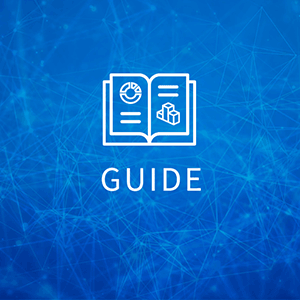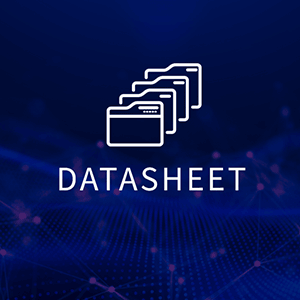It should be no surprise that the buzz around Technology Business Management (TBM) is catching on rapidly within the federal government. As in the commercial sector, more and more federal leaders are finding that the unique structure, discipline, transparency and insights that TBM provides enterprises are instrumental to achieving much-improved alignment between IT investments and mission or business outcomes.
Among the top goals federal leaders have in standing up TBM practices across government are:
- Improved business, financial and acquisition outcomes
- Streamlined IT reporting through technology
- Increased efficiency in IT investments
- The ability to do IT benchmarking
Today, federal leaders do not know where much of the government’s estimated $90 billion in IT spending is going because agencies lack standards for categorizing their IT spend data. As the 2018 President’s Management Agenda (PMA) points out: “This lack of granularity makes it difficult to baseline federal investments and show the public whether government is spending taxpayer dollars effectively in order to drive the large-scale change needed to improve business transformation and citizen services.”
With TBM, federal leaders aim to change that. The PMA’s Cross-Agency Priority (CAP) goal, called “Improving Business, Financial and Acquisition Outcomes through Federal IT Cost Transparency,” aims to achieve complete federal adoption of TBM standards and practices by fiscal 2022. To get there, agencies must gradually increase the granularity of their federal IT reporting as part of the Capital Planning and Investment Control (CPIC) process between fiscal 2019 and fiscal 2021 so that, by fiscal 2022, the entire government is fully adopted to the TBM taxonomy.
To better understand how TBM helps agency leaders make smarter IT investment decisions, we need to look closer at how the TBM taxonomy works. It is comprised of three tiers, each representing a different view into the same IT costs:
- Finance tier. Comprised of general ledger data, this tier uses a standard set of Cost Pools that describe types of assets and services purchased (e.g. hardware, software, internal labor, external labor, facilities and power, outside services and other).
- IT tier. A standard set of categories called IT Towers and Sub- Towers describe the technology functions supported by that IT spend (e.g. storage, voice and data networks, servers, application development and support).
- Business/government tier. This is the highest layer of the taxonomy and presents standard application and service categories, which can then extend further into higher-layer, industry-specific business or government units and capabilities. This tier allows for comparisons and benchmarking within each industry or government sector. This tier also includes the business unit consumer so the resulting value of IT spend can be traced all the way to the recipient of the service or product being delivered.
Importantly, the taxonomy is extensible by design so that agencies can apply mission-specific, sector-specific or agency-specific extensions, or even new categories or sub-categories for unique technology, to the taxonomy.
Because of this capability to extend the taxonomy, agency IT teams can categorize their IT spend down to the product level for far greater visibility and granularity. For example, the existing TBM taxonomy informs agency managers what they are spending on software, but it does not break that category down further. By extending their TBM taxonomies, agency managers can understand how their software spend breaks down into categories, such as business intelligence, databases and CRM, among others. And each of those software categories can be further broken down into products and product versions.
Extending TBM’s visibility and granularity down to the product level provides managers a clearer understanding of how their IT spending translates into mission or business value for the agency. Application owners, for example, can better understand the TCOs and mission value they are getting from their application portfolios and better rationalize and right-size those portfolios. They can better weigh options between spending on DME versus O&M and estimate impacts for applications being considered for decommissioning.
With product-level IT spend data, IT services owners can more easily optimize efficiencies for their IT platforms, justify IT spend and align infrastructure capacity to usage. They can easily see how their unit costs compare to peers, understand what is driving their O&M costs and identify which components of their infrastructure are at risk due to being at or near end of life (EOL).
Likewise, this product-level data similarly benefits CIOs and their IT leadership teams that are looking to shift O&M spend to DME, or better understand their IT costs; program managers can better align resources to program priorities and mission needs and see the value they get from their IT spend in specific terms; and finance teams can more easily establish governance and accountability controls and oversight and identify where cost-reduction opportunities exist.
Extending TBM’s Value With Flexera Data Platform
The powerful Flexera Data Platform enhances agencies’ TBM practices by extending their taxonomies to include product details in their IT spend profiles. The Flexera Data Platform taxonomy picks up where the TBM taxonomy stops by breaking down all software and hardware categories into product classes, products and even product versions. With this level of detail, agencies can optimize resource allocation and investments at the transaction level for software and hardware.
As the IT industry’s only open data platform, Flexera Data Platform is powered by Technopedia — the world’s largest, most accurate and up-to-date repository of enriched software and hardware asset data available. With Flexera Data Platform, agencies get unrivaled, authoritative market intelligence on all of their IT assets, at any time. It is the de facto standard for technology asset data and it comes enriched with market intelligence that serves numerous IT management initiatives, including IT lifecycle management, asset management, audits, IT planning, pricing, Windows migrations, virtualization and more.
IT Visibility
The business promise of your IT is huge. But it takes a complete, up-to-date view of your hybrid environment to make the most of it.
With more than 2.1 million IT products and 150+ million data points of timely, relevant product info, Technopedia delivers consistent, accurate and business-relevant information for strategic decision making and tactics. And it is always current, with more than 2,500 updates a day.
Technopedia transforms agency management by delivering a single, consistent, accurate version of the truth, so C-Suite leaders can better and more easily align IT technology, processes and decisions — from finance and procurement to operations and compliance — around immediate and actionable data.
For agencies to fully exploit the value of TBM, they will need to extend their visibility down to the product level to power data-driven business decisions at the transaction level. Only the Flexera Data Platform can deliver the actionable data needed to help agency leaders bring greater efficiency, effectiveness and transparency to their sprawling IT operations.







